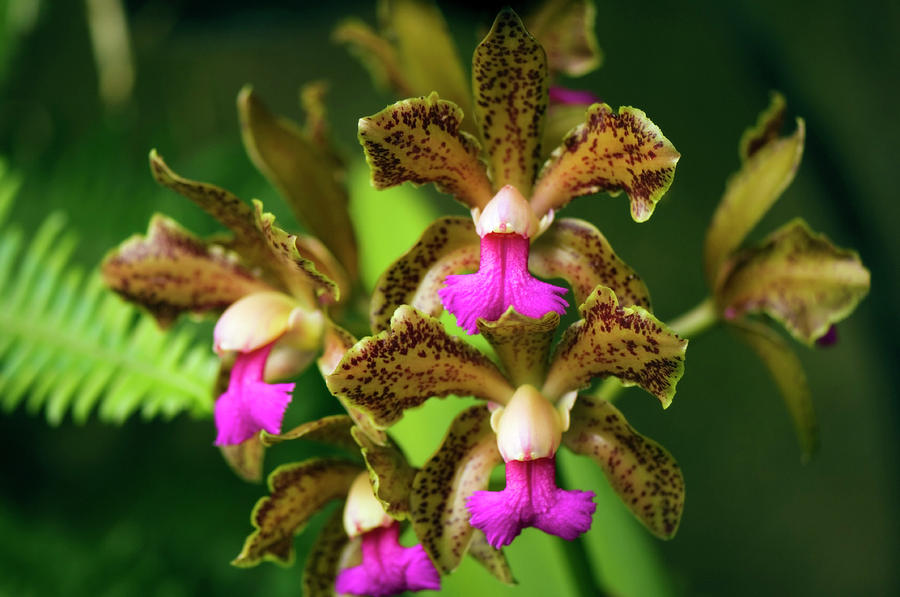Cattleya Orchids Facts, Different Varieties, and How to Grow and Care
Corsage Orchid, Cattleya, or the Queen is the most popular type of orchid found in the world. In fact, most people connect the word orchid with Cattleya, which is why this species is more widespread than others.
Cattleya orchid has a stunning appearance and fragrant large colorful flowers. Therefore, this species is a common guest in many homes across the world. But why is this plant so popular? Is it demanding to grow? Should you have one in your home? That, and many more questions will respond in the article down below.
History, name, and the origin
The name cattleya refers to the entire family of cattleya orchids, and it was first discovered by William Cattley, who accidentally brought the framed corsage orchid to England. In 1818, he was importing a lot of tropical plants from Brazil and stumbled upon this beautiful flower.
Later on, in 1821, John Lindley, a plant taxonomist, described this plant in one of his books and named it after William Cattley.
Features of cattleya orchids
Cattleya orchids are notorious for their fragrant and snowy blooms, as well as their different forms and vivid colors. While some types have smaller colors, they are still attractive as large ones. You should keep in mind that cattleya orchids are slow growers, and it will need them approximately seven years to mature when grown from seed.

Now, let’s go back to their features!
Cattleya flower
The flower can reach the size of eight inches, with colors varying from white to blue, yellow, red, purple, orange, and pink. They bloom once a year, but some hybrids are known to produce flowers twice or three times a year.
Pseudobulbs and Rhizomes
These species are sympodial epiphytes, which means they need a horizontal tree to grow. Additionally, Cattleya orchids have rhizomes, which create new shoots for the plant’s growth and pseudobulbs crucial for the orchid’s development and storage of nutrients.
Leaves
If the plant is healthy, the leaves need to be fleshy and green, while the shape is elliptical with smooth margins.
Different varieties
Currently, there are 46 recognized species and 35 natural hybrids, which come from Central and South America. Therefore, here are a couple of the most popular cattleya orchids.
Cattleya labiata
Also known as Ruby-lipped Cattleya orchid and of the easiest and most reliable orchids to grow. It is commonly found in rainforests in Brazil, and it grows in mountain ranges and trees above 500 meters. This orchid can produce up to five fragrant flowers, approximately seven inches across bloom.
Cattleya intermedia
The next on our list, Cattleya intermedia or intermediate cattleya, is a part of a bifoliate group. It is located in southern and central Brazil, and it grows in coastal parts of Uruguay and Argentina.
This is a small to medium species, and it can produce three to seven flowers, up to five inches across. The flowers range in magenta, lavender, pink, or white color.
Cattleya bicolor
Or in other words, bicolored cattleya was first introduced in 1836. This type of orchid grows in rocks and trees near coastal areas in Brazil. Cattleya bicolor is a medium to large-sized orchid, whose stems grow up to 30 inches high.
It gives up to five flowers that bloom sunningly untill the mid-summer.
Cattleya Hybrids
Cattleya orchids have been hybridized numerous times, resulting in a significant range of hybrids. There are two general types of this plant, intergeneric hybrids, and interspecific hybrids.

How to grow cattleya orchids?
Cattleya orchid care is not as complicated as many would seem. Even though this is a delicate plant, it can grow into a stunning orchid with a bit of attention. This popular orchid type needs favorable environmental conditions, well-drained containers, and proper growing media, among other things.
First of all, try to focus on light exposure and where you will place your orchid. While this type likes sunlight, it doesn’t stand direct sunlight unless you want to damage its leaves and flowers.
Next on your list should be the proper temperature. Regardless of where you live, make sure your cattleya orchids have a consistent temperature, between 70-85F during the day and 55-60F during the night.
When it comes to watering, allow your cattleyas to dry thoroughly before you water them. Keep in mind that they don’t like an overly moist environment which can lead to mold and rotting. After all, it’s easier to recover plants from dryness and rotting.
You can use fertilizers if you want, but most people don’t use them initially but wait a couple of years. However, keep in mind that it will help you plant produce big and beautiful flowers.
Last but not least is repotting, which you can do every two to three years, to keep the roots and your orchid healthy. While many owners are afraid of this step, thinking they will damage the plan, there is no need for it. Make sure to follow the instructions, and your orchid will be safe.

